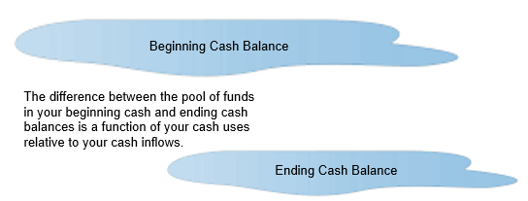
Anytime your cash outflows are greater than your cash inflows, that’s your business telling you that you are spending more to do business than you should.
If you find yourself scrambling to pay a vendor so they will release materials for you to use on your next order, it’s past time to review your uses of money to see where you can cut back.
The fastest way to build cash reserves is to have fewer uses for your money. The less you spend, the more you can set aside.
Overview
Cash Outflows = Uses of Money. They represent any of the following uses of funds by a business:
- Payroll + Employee Costs
- Recurring Expenses
- Vendor/Supplier Payments
- Rent or Mortgage Payments
- Lease Payments
- Interest Expenses
- Credit Line Repayment
- Long-term Notes Payable
- Sales + Other Taxes
- Miscellaneous Charges
Cash management helps you know the flow of money through and then out of your business. Use this process to know when and where cash will be needed to fund operations. Knowing the timing of your cash outflows relative to your cash inflows is the only effective way to ensure you aren’t wasting your money.